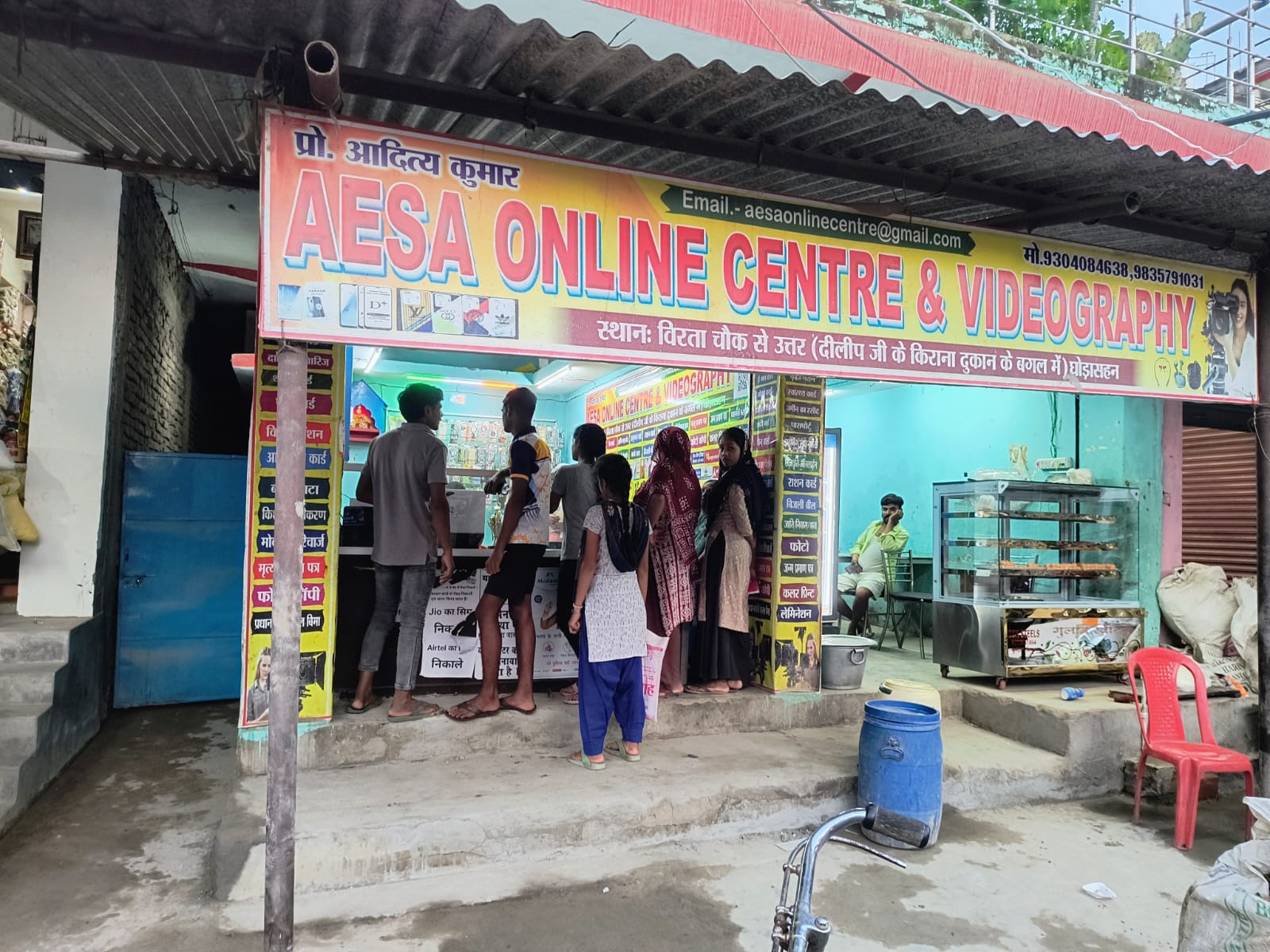The festival season is around, and so are “great sales” and discounts. From the Great Indian Sale on Amazon to ‘regular customers only’ discounts by your go-to vendor, the upcoming months are expected to offer massive savings even as we take the opportunity to spend more. This is compounded by the “Diwali Gift” that the Indian government claimed to give its citizens starting from September 22, with the implementation of the Goods and Services Tax (GST) reforms. However, even as consumers compare prices across physical shops and e-commerce websites to avoid deceptive selling tactics, they may be missing out on specific gendered marketing strategies. The first is the disproportionate burden of care during festivities, and the other is the ‘Pink Tax’. Both are rendered to female customers, the most critical consumer group for this season. Not officially recognised by any government, but definitely charged in every economy, the pink tax is a disadvantage imposed on female taxpayers who pay a different amount for a good or service than their male counterparts. This charge almost always makes the item costlier.
In 2022, a World Economic Forum (WEF) report cited a US-based study by the Joint Economic Committee (JEC) to indicate that, on average, personal care products targeting women are 13% more expensive than those targeting men. Similarly, accessories and adult clothing were 7% and 8% more expensive, respectively. According to this study, which analysed 800 gender-specific products from about 100 brands, “women are paying thousands of dollars more over the course of their lives to purchase similar products as men.” It is appalling that after having fought for the right to work and a fair wage, women as consumers now have a battle for product price parity.
Festive burden on women
While the festive season is a time when people look forward to decompressing and spending time with their loved ones, there is a disproportionate expectation between males and females to balance the two individualistic and collectivist desires. The gendered burden of festive celebrations is often overlooked through the romanticisation of family meals, festive decorations, and overloaded schedules. The blame is shared by our age-old scriptures, elaborate ritual practices, larger-than-life cinematic portrayals and targeted advertisements which cultivate expectations of what a ‘special day’ should look like.
While the festive season is a time when people look forward to decompressing and giving in to spending time with their dear ones, there is a disproportionate expectation between males and females to balance the two individualistic and collectivist desires. The gendered burden of festive celebrations is overlooked by the romanticisation of family meals, festive decorations and overloaded schedules.
Relevant to this discourse are the narratives created by brands to market their products during this festive season, which are inherently stereotypical and price-discriminatory. From a sociological perspective, a Pink Tax continues to exist because people believe that female consumption patterns are inevitably costlier than men’s. For example, rarely does a jewellery brand advertise conventionally male-worn ornaments even if they offer them. But elaborate gold and diamond works will flood our advertising space with leading actresses performing the same age-old script of a surprised reaction over and over again, just with different labels. The festive emotion survey by Disney+ Hotstar found that female customers increase their budget by 70% as compared to last year, every season.
Gendered marketing challenges
This is why studying female-centric marketing becomes necessary. Manisha Kapoor, the CEO and Secretary General of the Advertising Council of India (ASCI), highlights the allegory of women being connected to prosperity and auspiciousness. However, she is not to be revered. Instead, she is ever ready to look after ‘bin-bulaye mehmaan’ or unexpected guests, and their insatiable hunger for an authentic celebration.
This tokenisation of the female identity to monetise from them is an unbroken advertising strategy. Even when choosing to portray the trope of an ‘empowered working woman’, brands tailor the message to depict a multitasking worker, blurring the boundaries between the self and family. In this context, Adyasha Roy Tomar, the Creative Director at McCann Worldgroup, rightfully says that in a Diwali advertisement, women are the decor. It is the idea of a ‘cultured woman’ that is on sale because if that sells, so will the products. How must we bring about a shift from the skewed portrayal of, as Moumita Pal from Dentsu Creative says, “man’s money and the wife’s decision, the man’s money and the mother’s considerate choice, the man’s money and the sister’s delightful purchase”?
A facet of deceptive marketing and advertising practices is the Pink Tax. Believed to have originated in 1994 in California, this is a misleading strategy that aims to obtain a surplus value through the practice of gendered pricing of products and services. By exploiting the gendered norms, expectations, and stereotypes prevalent in society, companies capitalise on the human need for social conformity.
According to the JEC, gender-based pricing has affected not only daily consumption but also healthcare costs and luxury purchases.
The justifications for higher pricing are varied. It may be masked as a promise of premium quality or advertised as an existential or basic need. For example, the aroma of body scents that are marketed as ‘for females’ tends to last for a shorter period of time than those labelled as ‘for men’. A UK-based study found that women’s deodorant and facial moisturisers were, on average, 8.9% and 34.28% more expensive, respectively, than men’s.
This triggers a cycle of regular purchases to compensate for the empty bottles that are already a result of the ineffective previous use. Another such gimmick is limited choices. The standard joke is that women are often spoiled for choice as consumers. In reality, it is the systematic exploitation of the female market by creating a paucity of gender-neutral items of purchase and pushing consumers to the pricier ‘women-section’.There is also a severe lack of awareness that makes female consumers less likely to question the price disparity. Hopefully, this will be addressed by the end of this article.
Global impact of tariffs & pink tax
Ever wondered about the impact of increased tariffs by the US President on the female consumers in India? The JEC report discusses how tariffs affect the Pink Tax. Some products may face higher tariffs, and materials deemed more feminine may become costlier to manufacture, which will indirectly determine the burden and incidence of the tax. In addition to this, a higher cost of labour or an advertisement tax targeting women may also increase marketing costs. The JEC study found that tariffs on women’s clothing were 3.2% higher than those on men’s clothing.

Product differentiation, price differentiation and price fixing are other possible explanations for the higher prices of women’s products and services. Not limited to this, single, divorced or widowed women historically found it challenging to apply and secure credit, as it required a male co-signee. Regardless of income or purpose of loan, women have been charged higher interest rates, according to the JEC study.
According to the JEC, gender-based pricing has affected not only daily consumption but also healthcare costs and luxury purchases. For example, health insurance premiums are often made more expensive for women due to the expected costs of pregnancy and childcare. Similarly, hygiene products that are necessary for women and have no equivalent for men are taxed differently, and mainly at a higher rate. The Affordable Care Act in the US was introduced to eliminate this disparity.
It was only on 26 July 2018 that the Government of India eliminated GST on sanitary products, including sanitary pads, tampons, and menstrual cups, after a citizens’ protest. Previously, menstruating individuals paid a 12% GST on necessities.
Pink tax: Consumer rights and legal recourse
On a visit to the salon the other day I heard a woman arguing with the owner about why the hair trimming prices for her twins, boy and girl, were different even though they had the same hair length, more popularly known as the ‘boy-cut’. It is a reality that from clothing to personal care products, services and even toys, the pink tax invisibly exists and unfairly burdens female pockets. The JEC found that even dry cleaning prices for women’s dress shirts were 90% more expensive than for men’s shirts.
On a visit to the salon the other day I heard a woman arguing with the owner about why the hair trimming prices for her twins, boy and girl, were different even though they had the same hair length, more popularly known as the ‘boy-cut’.
The Pink Tax Repeal Act has been pending in the US Congress. As an Indian consumer, you should be aware that there is no such thing as a ‘pink tax’ in India. However, no regulation specifically addresses this malpractice. Regardless, the Consumer Protection Act 2019 and anti-discrimination provisions can be invoked to challenge unfair pricing practices.
The CPA, 2019, provides a basis for legal recourse in instances of unfair trading and discriminatory pricing. Its provisions mandate:
- Right to information,
- Right to choose, within which comes the freedom to select from a variety of choices without facing unfair trading practices, false advertising, purchase of defective products, service complaints, etc., and
- Right to redressal
With the introduction of e-filing of complaints and increased regulations on e-commerce, the CPA, 2019, has made legal redress easier with greater compensation to aggrieved consumers.
While legal redressal is available, it is better to take preventive measures before the cure. By regularly updating themselves on relevant consumer rights and laws, female consumers must have a basic understanding of the market and its dynamics. It is not a ‘man’s job’. Documenting all transactions and practising mindful shopping habits, unlike that of the romanticised shopaholic, is necessary to combat this manipulative gendered discrimination.
The JEC report also discussed the surge in earning power that women are experiencing, thanks to fair wage laws and increased control over their finances. However, coupled with mounting household expenses and such deceptive pricing, the benefits are not being realised.
The pink tax persists due to two reasons. One, the stereotypical advertising of the female market as more luxurious and hence, costlier than that of men, and two, the lack of awareness among female customers of its existence. While the former requires a paradigm shift in the patriarchal thinking patterns of society, the latter can be addressed first by ending the ignorance. To outsmart the Pink Tax, female customers can start by looking for gender-neutral products or those marketed as ‘for men’, thereby breaking away from the traditional norms. Choosing unisex products might not only reap cost benefits but also challenge the monotony.
For significant savings over time, customers may want to compare the charge per unit rather than the entire packaging. Rather than rushing to buy a product in the market, compare the cost of men’s and women’s variants on e-commerce websites or vice versa. Most importantly, support pocket-friendly, thrift, or gender-neutral brands and start-ups to encourage the shift towards price parity.
While the National Consumer Dispute Redressal Commission (NCDRC) has ruled that companies must avoid gender-based price discrimination, action will not be taken until the silence persists and violations are reported. Abolition of the Pink Tax is not just about extra savings. That surplus is being illegally charged and will continue to disadvantage the future generations of female consumers unjustly.
About the author(s)
Second year student of Media Studies at CHRIST (Deemed to be University), BRC, Bangalore. A trained Kathak dancer, theatre artist and political nerd.






This helped me rethink my strategy. Thanks for the inspiration!